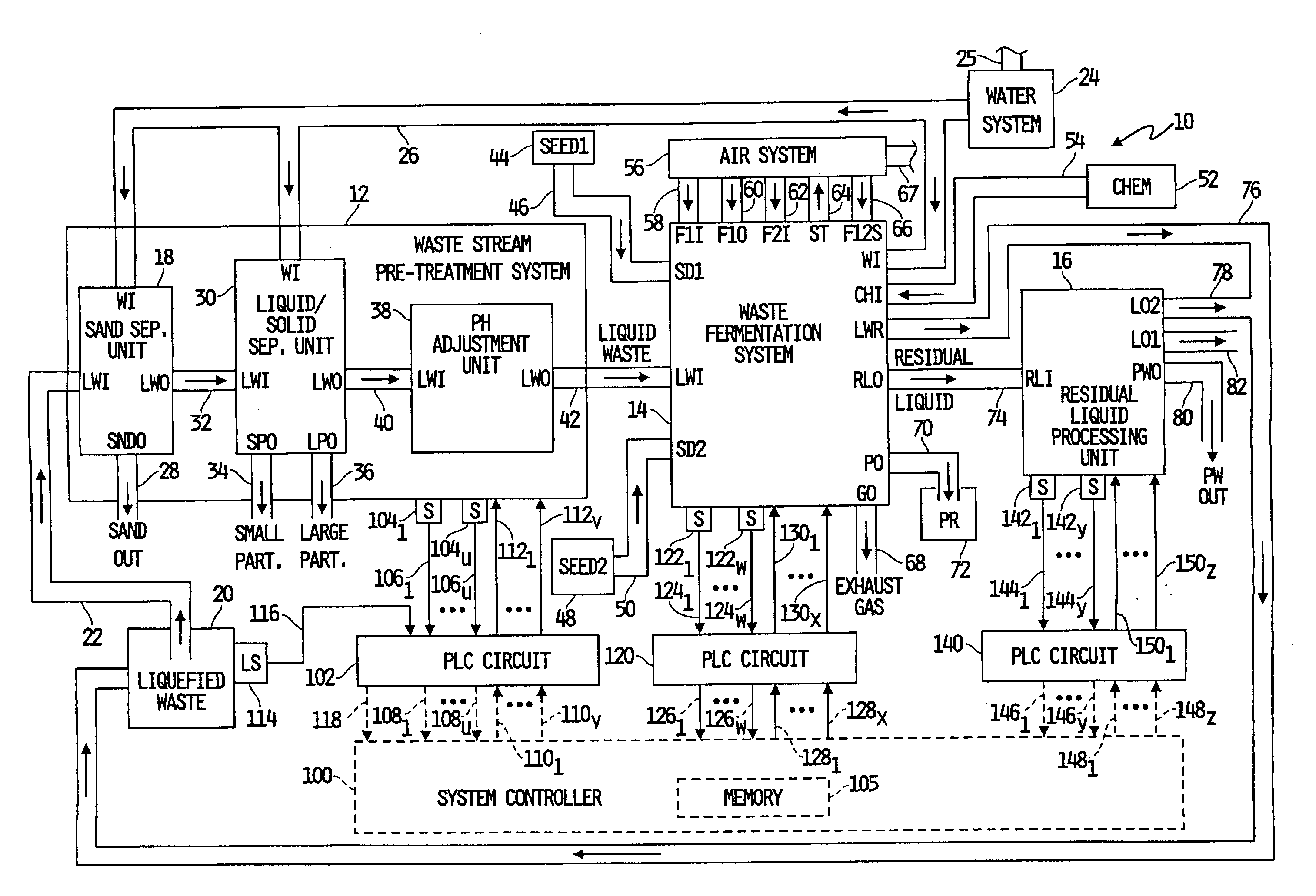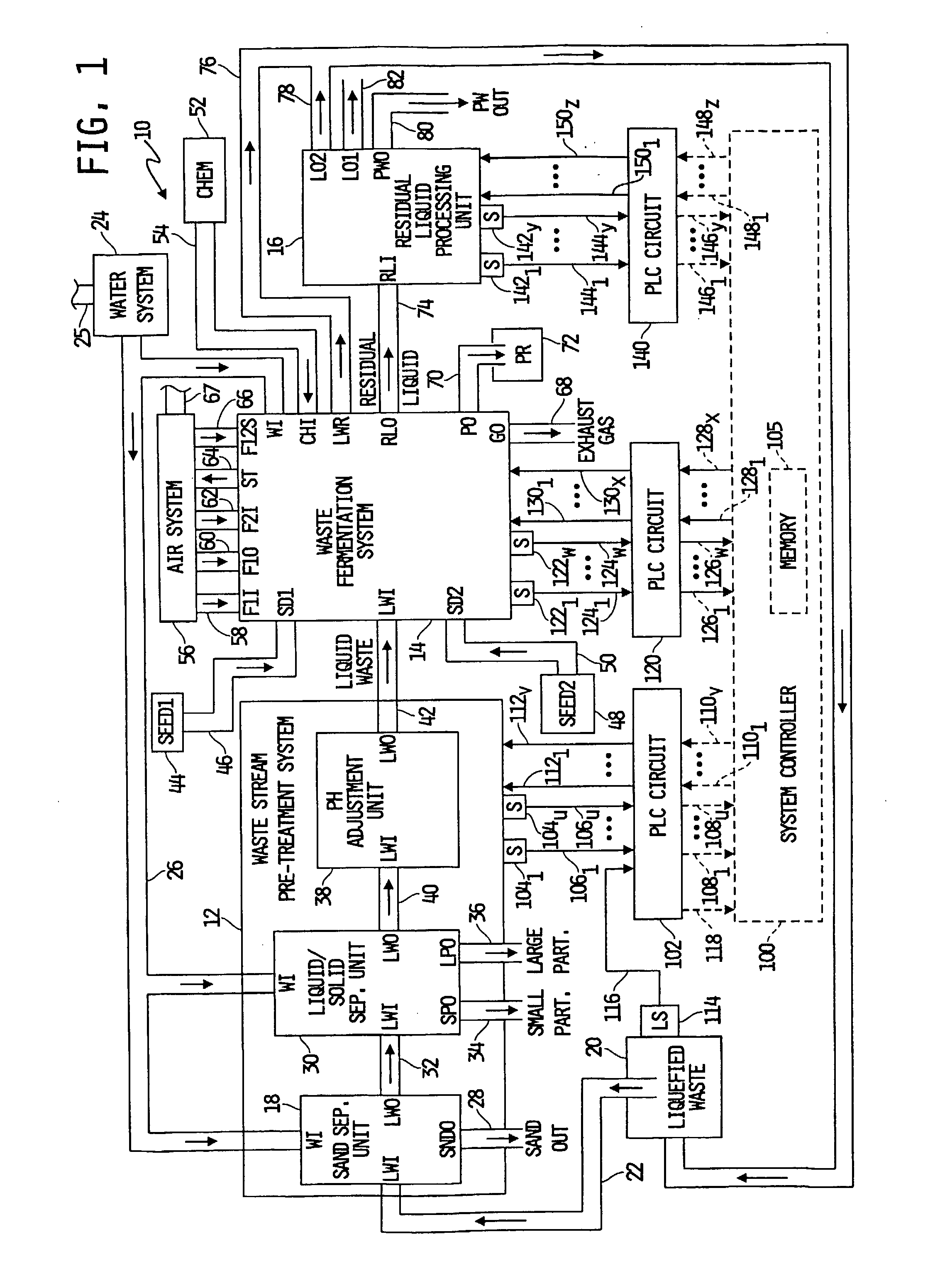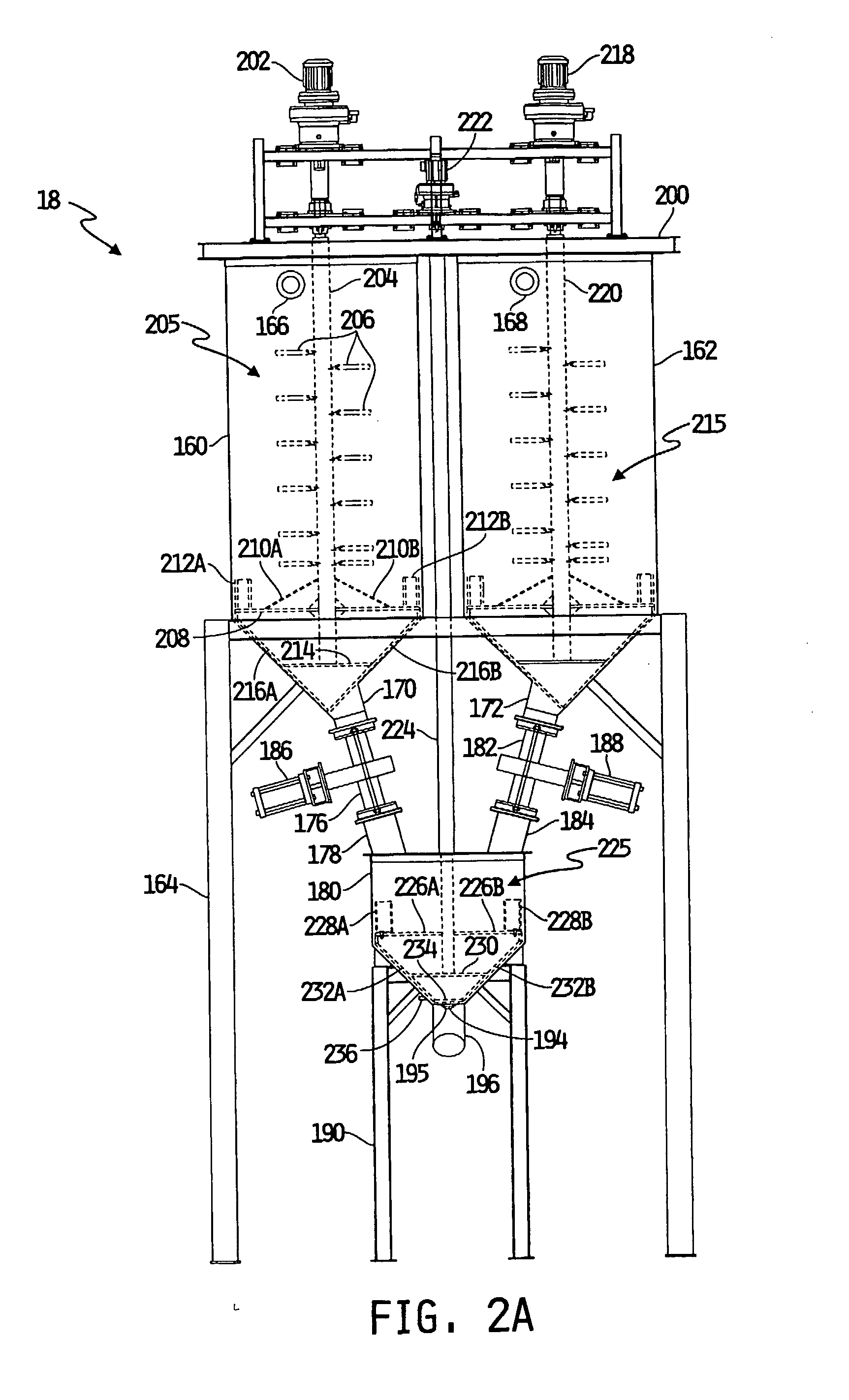System for Processing a Biomaterial Waste Stream
a biomaterial waste and biomaterial technology, applied in the direction of filtration separation, sedimentation settling tanks, separation processes, etc., can solve the problems of increasing the acreage needed, increasing the volume of waste generated, and increasing the difficulty of biomaterial waste disposal
- Summary
- Abstract
- Description
- Claims
- Application Information
AI Technical Summary
Problems solved by technology
Method used
Image
Examples
example 1
[0226] Sterilization of an animal waste stream within the sterilization unit 570 is achieved as a combination of time, temperature, and pH level of the waste stream. A relatively higher sterilization temperature will produce a relatively shorter sterilization time. It has been found that the quality of the resulting sterilized animal waste stream is higher with short duration sterilization times and concomitant higher sterilization temperatures. An example of settings found effective are summarized in Table 3:
TABLE 3DesignTemperatureDesign PressureDescription(° F.)(° C.)(psig)Steam32016075Liquid entering sterilization loop 63027513531Liquid exiting sterilization loop 630270132.22227Liquid after sterilizationambient +2-440Pump pressure required55Sterilization retention time (TIMING LOOP 630):Sterilization loop pipe diameter6 inches (15.24 centimeters)Sterilization loop length173 feet (52.7304 meters)Volume of loop254 gallons (961.494 liters)Flow rate of Liquid125 gpm (473.177 lpm)R...
example 2
Titration of Barn Waste with 98% H2SO4
[0451] A representative average sample of barn waste was adjusted to 4% solids by weight (MM free). A 100 gallon (379 liter) aliquot of the 4% barn waste slurry was titrated with 98% sulfuric acid, and the pH and the conductivity of the resulting mixture was measured as a function of added acid. The results of the titration are shown in FIG. 47. As the pH (diamonds) decreased with added acid, the conductivity (squares, millisiemens) increased. The barn waste began as an alkaline mixture. It was also observed that the components of the barn waste buffered the solution to pH change. As the pH of the mixture approached neutrality, the conductivity measurement formed a first plateau. As the pH changed through the pKa range of most organic acid components included in the barn waste (pH 5.5-3.5), the conductivity formed another plateau, indicative of buffering. As the pH decreased below about 3.5, the conductivity increased rapidly. The first plateau...
example 3
Compositions of Illustrative Biomaterial Waste Streams
[0452] Table 4 illustrates representative compositions of horse, dairy, swine, and poultry waste streams.
TABLE 4Manure and urine analysis per 1000 pounds of animal.(a)horsedairybeefswinelayerbroilerhumanwet weight(b)508051.263.460.58030% water7887.588.490757589.1dry total11.010.06.3415.1solids(c)COD(d)ND(e)8.906.0613.7BOD(5)(f)ND1.602.083.70N0.280.450.30.420.831.10.2P0.050.070.090.160.310.340.02K0.190.260.220.34total dissolvedND0.851.292.89solids(g)C / N(h)191077AU(i)10.7419.092504558
(a)Data from 40CFR., US Environmental Protection Agency; average human weight in US of 125 pounds; data on generation rates, moisture content, nitrogen, and phosphorus from Agricultural Waste Management Field Handbook, USDA Natural Resource Conservation Service, Chapter 4 (April 1992); dairy is lactating cow; beef on high energy diet; swine refers to growers; layers and broilers refer to
# poultry;
(b)pounds / day / 1000# animal;
(c)determined by evapor...
PUM
| Property | Measurement | Unit |
|---|---|---|
| pH | aaaaa | aaaaa |
| temperature | aaaaa | aaaaa |
| cross-sectional flow area | aaaaa | aaaaa |
Abstract
Description
Claims
Application Information
 Login to View More
Login to View More - R&D
- Intellectual Property
- Life Sciences
- Materials
- Tech Scout
- Unparalleled Data Quality
- Higher Quality Content
- 60% Fewer Hallucinations
Browse by: Latest US Patents, China's latest patents, Technical Efficacy Thesaurus, Application Domain, Technology Topic, Popular Technical Reports.
© 2025 PatSnap. All rights reserved.Legal|Privacy policy|Modern Slavery Act Transparency Statement|Sitemap|About US| Contact US: help@patsnap.com



